
Nosy Be: The Perfumed Island of Madagascar
Discover Nosy Be, Madagascar's 'Perfumed Island'—a tropical paradise known for its fragrant plantations, pristine beaches, vibrant marine life, and unique wildlife experiences.
Nosy Be, often referred to as the 'Perfumed Island', is a little slice of paradise off the northwest coast of Madagascar. This tropical island is known for its fragrant ylang-ylang plantations, vanilla, and spices that fill the air with delightful scents. The island boasts of pristine beaches, crystal clear waters, and lush green landscapes that make it a top destination for beach lovers and nature enthusiasts alike. For those who love marine life, Nosy Be offers some of the best diving and snorkeling spots in the Indian Ocean. The coral reefs are teeming with colorful fish, sea turtles, and even whale sharks during certain times of the year. Don't miss a visit to the nearby smaller islands such as Nosy Komba and Nosy Tanikely, which are perfect for day trips and offer unique wildlife experiences. The island's capital, Hell-Ville, is a charming town with colonial architecture, bustling markets, and friendly locals. Here, you can savor delicious Malagasy cuisine, buy local crafts, and experience the vibrant culture. For a more tranquil experience, head to the Lokobe National Park, where you can trek through untouched rainforests and encounter rare lemur species in their natural habitat.
Local tips in Nosy Be
- Visit during the dry season (May to October) for the best weather and to avoid cyclones.
- Bring mosquito repellent, as the island is a tropical destination with a fair number of insects.
- Renting a scooter is a great way to explore the island independently and at your own pace.
- Try the local seafood dishes; the fresh catch of the day is always a treat.
- Learn a few basic phrases in Malagasy or French, as not everyone speaks English.
Nosy Be: The Perfumed Island of Madagascar
Nosy Be, often referred to as the 'Perfumed Island', is a little slice of paradise off the northwest coast of Madagascar. This tropical island is known for its fragrant ylang-ylang plantations, vanilla, and spices that fill the air with delightful scents. The island boasts of pristine beaches, crystal clear waters, and lush green landscapes that make it a top destination for beach lovers and nature enthusiasts alike. For those who love marine life, Nosy Be offers some of the best diving and snorkeling spots in the Indian Ocean. The coral reefs are teeming with colorful fish, sea turtles, and even whale sharks during certain times of the year. Don't miss a visit to the nearby smaller islands such as Nosy Komba and Nosy Tanikely, which are perfect for day trips and offer unique wildlife experiences. The island's capital, Hell-Ville, is a charming town with colonial architecture, bustling markets, and friendly locals. Here, you can savor delicious Malagasy cuisine, buy local crafts, and experience the vibrant culture. For a more tranquil experience, head to the Lokobe National Park, where you can trek through untouched rainforests and encounter rare lemur species in their natural habitat.
When is the best time to go to Nosy Be?
Iconic landmarks you can’t miss
Royal Beach
Experience the ultimate tropical escape at Royal Beach in Nosy Be, where luxury meets the beauty of Madagascar's shores.

Lemuria Land
Explore the enchanting Lemuria Land, an animal park in Hell-Ville, Madagascar, where wildlife and nature intertwine for an unforgettable experience.

Nosy Iranja
Explore Nosy Iranja: A Tropical Island Oasis in Madagascar with Stunning Beaches, Rich Marine Life, and Cultural Experiences Awaiting You.
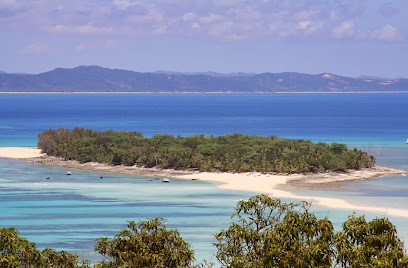
Anjiamarango Beach Resort
Discover the serenity of Anjiamarango Beach Resort, where luxury meets nature in the heart of Madagascar's pristine coastline.

Tsingy Rouge
Explore Tsingy Rouge, Madagascar's stunning red rock formations and natural labyrinth, a perfect adventure for nature lovers and photographers.

Nosy Ambariovato
Explore the serene beauty of Nosy Ambariovato, an idyllic island in Madagascar offering stunning beaches, rich marine life, and lush tropical landscapes.

Montagne D'Ambre nationalpark
Explore the lush landscapes and unique wildlife of Montagne D'Ambre National Park, a must-visit destination for nature lovers in Madagascar.

Cascade de Nosy Be
Experience the natural beauty of Cascade de Nosy Be, a stunning waterfall oasis in Madagascar, surrounded by lush landscapes and vibrant wildlife.

Mont Passot
Discover the breathtaking views from Mont Passot, a majestic mountain peak on Nosy Be, Madagascar, perfect for nature lovers and sunset seekers.

Lokobe Nature Special Reserve
Discover the breathtaking biodiversity and stunning landscapes of Lokobe Nature Special Reserve, Madagascar's hidden gem for nature lovers and adventure seekers.

Tsara Komba Lodge
Discover the enchanting Tsara Komba Lodge in Anjiabe, Madagascar - a paradise for nature lovers and adventure seekers alike.

Ambaro Ranch
Discover the breathtaking landscapes of Nosy Be, Madagascar, through unforgettable horseback riding experiences at Ambaro Ranch.

Nosy Be Original
Experience the pristine beauty and adventure of Nosy Be, Madagascar with unforgettable boat tours by Nosy Be Original.
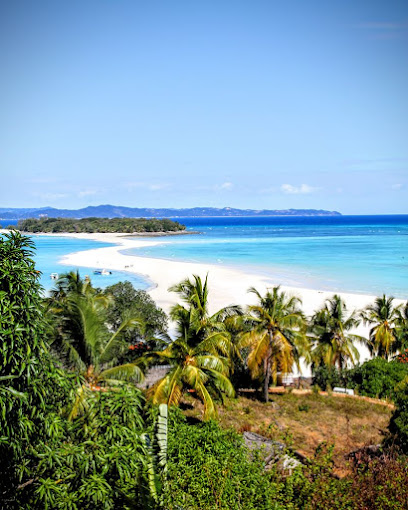
Mahatsingo Sacred Tree
Explore the Mahatsingo Sacred Tree in Nosy Be, Madagascar—an enchanting spiritual site steeped in local culture and tranquility.

Nosy Be-er
Explore the serene landscapes of Nosy Be-er, a hidden gem in Madagascar, perfect for nature lovers and tranquility seekers.

Unmissable attractions to see
Lemuria Land
Explore the wonders of Madagascar at Lemuria Land, an animal park that showcases the island's unique wildlife in a stunning tropical setting.

Lemuria Land
Discover the wonders of Lemuria Land, Madagascar's premier animal park, where you can interact with playful lemurs and explore lush landscapes.

Nosy Sakatia
Discover the tranquil beauty of Nosy Sakatia, an idyllic island retreat known for its stunning beaches and vibrant marine life, perfect for relaxation and adventure.

Cascade de Nosy Be
Experience the natural beauty of Cascade de Nosy Be, a stunning waterfall in Madagascar surrounded by lush landscapes and vibrant wildlife.

Nosy Tanikely National Park
Explore the breathtaking marine life and untouched landscapes of Nosy Tanikely National Park, a national treasure in Madagascar.

Andilana
Discover the idyllic Andilana Beach in Madagascar, where soft sands and crystal waters create a perfect paradise for relaxation and adventure.

Lokobe Nature Special Reserve
Discover the stunning wildlife and lush landscapes of Lokobe Nature Special Reserve, a true gem of Madagascar's biodiversity.

Mont Passot
Experience breathtaking panoramic views at Mont Passot, a serene observation deck in Ambaro, Madagascar, perfect for nature lovers and photographers.
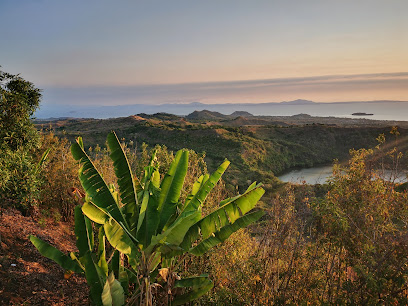
Ambaro Ranch
Experience the beauty of Nosy Be Island on horseback at Ambaro Ranch, where adventure meets serenity in a tropical paradise.

Mahatsingo Sacred Tree
Explore the Mahatsingo Sacred Tree in Hell-Ville, a spiritual haven and cultural landmark of Madagascar, offering tranquility and local traditions.

Oceane's Dream
Explore vibrant marine life and breathtaking dive sites at Oceane's Dream, the premier dive club in Ambatoloaka, Nosy Be.

Nosy Be-er
Discover the tranquil beauty of Nosy Be-er, a lush park in Madagascar perfect for nature lovers and those seeking serenity amidst stunning landscapes.

Isola dei Lemuri ( Maki )
Explore the stunning Isola dei Lemuri, Madagascar's paradise for lemur lovers and nature enthusiasts, offering unique wildlife experiences in breathtaking surroundings.

Ma Petite Cascade Secrète
Explore the breathtaking beauty of Ma Petite Cascade Secrète, a hidden hiking gem in Marokindro, Madagascar, perfect for nature lovers and adventure seekers.

Cruise Mooring Nosy Be
Explore the enchanting Cruise Mooring Nosy Be, where adventure meets tranquility amidst Madagascar's stunning coastal scenery.

Essential places to dine
ZèBurger
Discover unique flavors at ZèBurger in Hell-Ville, Madagascar – where delicious burgers meet local culinary traditions.

Cacao beach, Chez Loulou
Discover the exquisite tastes of Madagascar at Cacao Beach, Chez Loulou – where fresh ingredients meet stunning ocean views.

Club House Restaurant & Bar
Discover culinary delights at Club House Restaurant & Bar in Nosy Be – where fresh seafood meets stunning beachfront views.

Tsy Manin - Resto & Chill Out Bar
Experience exquisite dining at Tsy Manin – where local flavors meet stunning beach views in Nosy Be's tropical paradise.
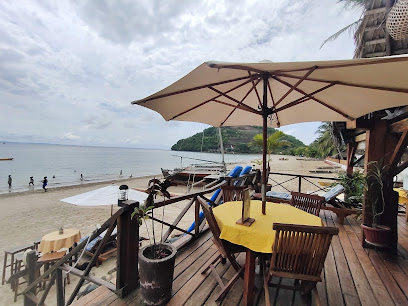
Le Papillon
Discover authentic Malagasy flavors at Le Papillon in Hell-Ville, where each dish tells a story of local culture and tradition.

Restaurant Chez Gregoire
Discover authentic Malagasy flavors at Restaurant Chez Gregoire in Andilana – where every meal is a celebration of local cuisine.

Les siciliens
Experience authentic Italian cuisine at Les Siciliens in Hell-Ville - where every dish tells a story.

Chez Angeline
Experience authentic Italian cuisine at Chez Angeline in Ambatoloaka – where every dish is crafted with love and quality ingredients.

Karibo Restaurant
Experience authentic Malagasy cuisine at Karibo Restaurant in Hell-Ville - where every dish tells a story.

Restaurant The View
Experience culinary delights with breathtaking views at Restaurant The View in Nosy Be - a perfect blend of taste and scenery.

Bambou Beach
Experience exquisite dining at Bambou Beach in Madirokely—where delicious cuisine meets breathtaking ocean views.

Cuisine de Marna
Discover authentic Malagasy flavors at Cuisine de Marna, a top-rated restaurant in Nosy Be known for its warm ambiance and delicious dishes.

A Casa di Giorgia Lodge Nosy Be Andilana
Discover culinary delights and local craftsmanship at A Casa di Giorgia Lodge in Nosy Be's picturesque Andilana Beach village.

La Villa Nosy-Be
Discover La Villa Nosy-Be: A delightful fusion of culinary excellence, coworking convenience, and vibrant lounge culture in Hell-Ville.

Bambou Restaurant
Experience authentic Malagasy cuisine with breathtaking views at Bambou Restaurant in Ambatoloaka.
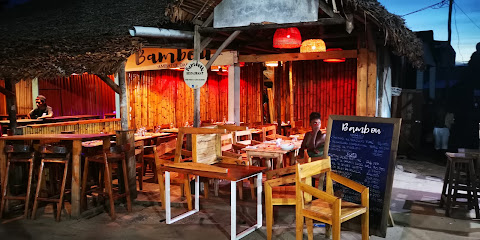
Markets, malls and hidden boutiques
Big Bazar
Discover the flavors of Madagascar at Big Bazar, the vibrant supermarket in Hell-Ville offering a delightful local shopping experience.
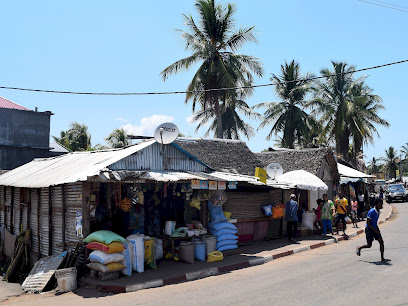
Nosy Be Market
Discover the lively Nosy Be Market in Hell-Ville, Madagascar, where local crafts, flavors, and vibrant culture come together in a unique shopping experience.

Grand Bazar de Nosy Be
Discover the lively Grand Bazar de Nosy Be, a vibrant shopping haven offering local crafts, delicious street food, and a taste of Malagasy culture.

Madachoc’attitude
Explore the exquisite world of artisan chocolates at Madachoc’attitude in Nosy Be, Madagascar, where every bite tells a story.

Bazar des Arts
Discover unique collectibles and local artistry at Bazar des Arts, a vibrant store in Madagascar celebrating the island's rich culture.

Toby Madagascar Tours
Discover the vibrant charm of Toby Madagascar Tours in Hell-Ville, a unique shopping experience on Nosy Be Island with local crafts and souvenirs.

Eurêka
Discover Eurêka, a vibrant shopping mall in Hell-Ville, blending local culture, unique crafts, and delightful dining experiences.

Rhum arrangé de Nosy-Be
Experience the rich and vibrant flavors of Madagascar at Rhum Arrangé de Nosy-Be, your destination for unique fruit and spice-infused rums.

BOUTIQUE NOIX DE COCO
Discover unique tropical fashion at Boutique Noix de Coco in Madirokely, Madagascar, and take home a piece of the island's vibrant culture.

NBM STORE
Visit the NBM Store in Ambondrona for a vast selection of building materials and expert advice, perfect for any construction project.

Hazovato Nosy Be
Explore Hazovato Nosy Be for unique, culturally-inspired furniture that reflects the spirit of Madagascar in a stunning shopping experience.

MANAGNA Sarl/ BESADY+
Experience the best of local shopping at MANAGNA Sarl/ BESADY+, a vibrant shopping mall in Hell-Ville offering unique Malagasy treasures.

TATA BOUTIQUE
Explore Tata Boutique in Hell-Ville for the finest selection of local clothing and unique souvenirs that embody the spirit of Madagascar.

3M MINI MARKET
Experience the heart of Nosy-Be shopping at 3M Mini Market, your local grocery hub for essentials and unique local treats.

BOUTIQUE MISS ERICA
Explore the vibrant fashion scene at Boutique Miss Erica in Hell-Ville, Madagascar, where unique clothing meets local craftsmanship.

Essential bars & hidden hideouts
Club House Restaurant & Bar
Discover the taste of Madagascar at Club House Restaurant & Bar, where delicious cuisine meets stunning ocean views in Nosy Be.

Le Taxi-Be
Experience the vibrant nightlife of Hell-Ville at Le Taxi-Be, a lively bar offering delicious local drinks and a welcoming atmosphere.

Tsy Manin - Resto & Chill Out Bar
Discover the serene ambiance and delicious cuisine at Tsy Manin - Resto & Chill Out Bar, your perfect escape on Nosy Be's stunning shores.

Ankibanivato beach bar
Discover the tropical charm of Ankibanivato Beach Bar in Ambaro, Madagascar, where stunning views meet delightful local cuisine.

La Villa Nosy-Be
Discover La Villa Nosy-Be, where delicious pizza meets a vibrant coworking space in the heart of Hell-Ville, Madagascar.
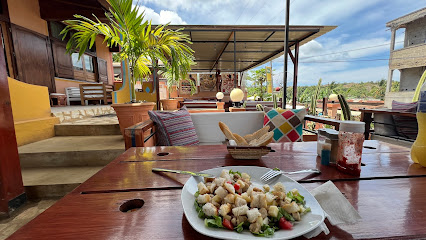
Trojy
Discover Trojy in Nosy Be, where exceptional pizzas meet a relaxed lounge atmosphere, perfect for a memorable dining experience.

Mango Factory
Experience the vibrant atmosphere of Mango Factory, a tropical lounge in Ambatoloaka, Nosy Be, where relaxation meets local flavor.

Océan bar
Discover the lively Océan Bar in Hell-Ville, Madagascar, where local flavors meet vibrant nightlife in a welcoming atmosphere.

Sando’s Solar bar
Discover the vibrant flavors and relaxing atmosphere of Sando’s Solar Bar in Nosy Be, where African cuisine meets tropical relaxation.

Couleur Kafé
Discover the vibrant nightlife and soulful music at Couleur Kafé, the heart of Nosy Be's entertainment scene.

Tuk Tuk Bar
Experience the vibrant atmosphere and local charm at Tuk Tuk Bar in Hell-Ville, where refreshing drinks and good company await.

Danae Barea Restaurant Pizza Cabaret
Discover the ultimate karaoke experience at Danae Barea Restaurant Pizza Cabaret, Nosy Be's hotspot for delicious pizza and vibrant entertainment.

ANJAVA BAR
Discover the heart of Nosy Be at Anjava Bar, where tropical drinks and local culture come together in a vibrant atmosphere.

Tennis Club de Nosy-Be
Discover the vibrant Tennis Club de Nosy-Be, a sports bar in Hell-Ville, Madagascar, where tennis excitement meets local culture and hospitality.
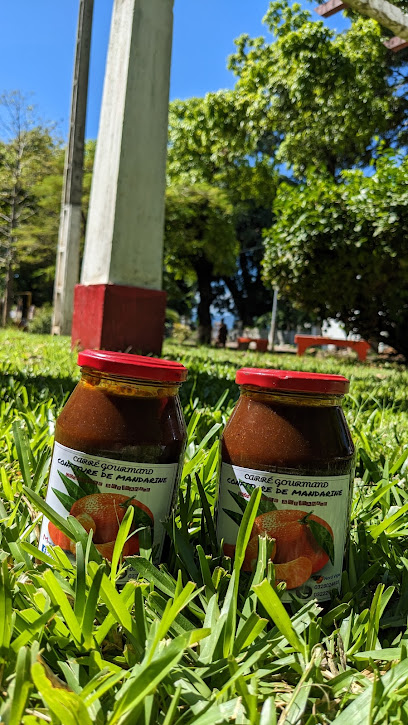
NOSY-BAR
Experience the authentic tastes of Madagascar at NOSY-BAR in Hell-Ville, Nosy Be, where local flavors meet welcoming hospitality.

Local Phrases
-
- HelloSalama
[sah-lah-mah] - GoodbyeVeloma
[veh-loh-mah] - YesEny
[eh-ny] - NoTsia
[tsi-ah] - Please/You're welcomeAzafady
[ah-zah-fah-dy] - Thank youMisaotra
[mee-sah-oo-trah] - Excuse me/SorryAzafady
[ah-zah-fah-dy] - How are you?Inona ny vaovao?
[ee-noh-nah nee vah-oh-vah-oh] - Fine. And you?Tsara. Ary ianao?
[tsah-rah. ah-ree ee-ah-nah-oh] - Do you speak English?Miteny teny Anglisy ianao?
[mee-teh-ny teh-ny ahng-lee-see ee-ah-nah-oh] - I don't understandTsy nety
[tsi nay-ty]
- HelloSalama
-
- I'd like to see the menu, pleaseTe hahita ny karazana, azafady
[teh hah-hee-tah nee kah-rah-zah-nah, ah-zah-fah-dy] - I don't eat meatTsy misy mofomamy aho
[tsi mee-see moh-foh-mah-mee ah-hoo] - Cheers!Mazotoa!
[mah-zoh-toh-ah] - I would like to pay, pleaseTe hanampy, azafady
[teh hah-nahm-pee, ah-zah-fah-dy]
- I'd like to see the menu, pleaseTe hahita ny karazana, azafady
-
- Help!Tongava!
[toh-ngah-vah] - Go away!Miala!
[mee-ah-lah] - Call the Police!Mangataka ny polisy!
[mah-ngah-tah-kah nee poh-lee-see] - Call a doctor!Mangataka dokotera!
[mah-ngah-tah-kah doh-koh-teh-rah] - I'm lostVoatery aho
[voh-ah-teh-ree ah-hoo] - I'm illMahafoy aho
[mah-hah-foy ah-hoo]
- Help!Tongava!
-
- I'd like to buy...Te hahita mivarotra...
[teh hah-hee-tah mee-vah-roh-trah] - I'm just lookingMihaino ihany
[mee-high-no ee-hah-ny] - How much is it?Ohatra ny vidiny?
[oh-hah-trah nee vee-dee-ny] - That's too expensiveMahafinaritra be izany
[mah-hah-fee-nah-ree-trah beh ee-zahn] - Can you lower the price?Aza misalasala ny vidiny?
[ah-zah mee-sah-lah-sah-lah nee vee-dee-ny]
- I'd like to buy...Te hahita mivarotra...
-
- What time is it?Inona no sahata?
[ee-noh-nah noh sah-hah-tah] - It's one o'clockIrery alina
[ee-ray ah-lee-nah] - Half past (10)Efatra sasany
[eh-fah-trah sah-sahn] - MorningMaraina
[mah-rah-ee-nah] - AfternoonAloatra
[ah-loh-ah-trah] - EveningHariva
[hah-ree-vah] - YesterdayOmaly
[oh-mah-ly] - TodayAnio
[ah-nyoo] - TomorrowRy zoma
[ree zoh-mah] - 1Iray
[ee-ry] - 2Roa
[roo] - 3Telo
[teh-loo] - 4Efatra
[eh-fah-trah] - 5Dimy
[dee-mee] - 6Enina
[eh-nee-nah] - 7Fitondra
[fee-tohn-drah] - 8Valo
[vah-loo] - 9Sivy
[see-vy] - 10Folo
[foh-loh]
- What time is it?Inona no sahata?
-
- Where's a/the...?Aiza...?
[ah-ee-zah] - What's the address?Inona ny adiresy?
[ee-noh-nah nee ah-dee-reh-see] - Can you show me (on the map)?Azonao ve manome anareo (amin'ny saritany)?
[ah-zoh-nah oh veh mah-noh-meh ah-nah-ray-oh ah-mee-nee sah-ree-tah-ny] - When's the next (bus)?Aiza ny iray manaraka (bira)?
[ah-ee-zah nee ee-ry mah-nah-rah-kah bee-rah] - A ticket (to ....)Ny lalao (ho...)
[nee lah-lah-oh oh]
- Where's a/the...?Aiza...?
History of Nosy Be
-
Long before European explorers set foot on its shores, Nosy Be was home to indigenous tribes such as the Sakalava people. These early inhabitants practiced fishing, agriculture, and trade with nearby islands, developing a distinct culture that still influences the island today.
-
In the 9th and 10th centuries, Arab traders began to frequent Nosy Be, bringing with them goods, culture, and Islam. The island became an important stopover on trade routes, and its strategic location contributed to its growing prominence in the Indian Ocean trade network.
-
Nosy Be became a French colony in 1841 when Admiral Pierre Passot took control of the island. The French established plantations, primarily for sugar and coffee, and built infrastructure to support their colonial activities. This period marked significant changes in the island's economy and social structure.
-
During World War II, Nosy Be served as a strategic location for the Allies in the Indian Ocean. After the war, Madagascar gained independence from France in 1960, and Nosy Be began to develop its own identity separate from colonial rule. Tourism slowly started to become a key industry for the island.
-
In the late 20th and early 21st centuries, Nosy Be transformed into a major tourist destination. The island's natural beauty, including its pristine beaches, lush forests, and unique wildlife, attracted visitors from around the world. Several festivals, such as the Donia Music Festival, further bolstered its cultural appeal.
-
With the rise in tourism, Nosy Be has also seen increased efforts towards conservation and sustainable practices. Organizations and local communities work together to protect the island's rich biodiversity and cultural heritage, ensuring that future generations can enjoy its natural and historical treasures.
Nosy Be Essentials
-
Nosy Be is an island located off the northwest coast of Madagascar. The easiest way to get there is by air, with Fascene Airport (NOS) serving as the main airport on the island. Direct flights are available from Antananarivo, the capital of Madagascar, as well as from international destinations like Réunion and Mayotte. Alternatively, you can reach Nosy Be by ferry from Ankify, a port town on the mainland of Madagascar. The ferry ride takes approximately 45 minutes to an hour.
-
Once on Nosy Be, you have several transportation options to explore the island. Taxis are readily available and can be hired for short trips or for the entire day. Tuk-tuks (motorized rickshaws) are a popular and inexpensive way to get around. For more freedom, consider renting a scooter or a car, but be aware that roads can be uneven and driving conditions may be challenging. Public minibuses (taxi-brousse) are also an option, connecting major towns and attractions at a low cost.
-
The official currency in Madagascar is the Malagasy Ariary (MGA). While some hotels, restaurants, and shops in Nosy Be accept credit cards, cash is still the preferred method of payment, especially in smaller establishments and rural areas. ATMs are available in Hell-Ville, the main town, but it is advisable to carry enough cash for your needs. Exchange rates can vary, so it's a good idea to convert some money before arriving or at the airport.
-
Nosy Be is generally a safe destination for tourists, but standard precautions should always be taken. Petty crimes like pickpocketing and bag snatching can occur, particularly in crowded areas and markets. Areas like Hell-Ville and Ambatoloaka have higher instances of crimes targeting tourists, especially at night. Avoid walking alone after dark and be cautious with your belongings. It is also advisable to use hotel safes for valuables.
-
In case of emergency, dial 117 for police assistance and 124 for medical emergencies. The main hospital is located in Hell-Ville and provides basic medical services. For serious medical issues, evacuation to a facility in Antananarivo or abroad may be necessary. It is highly recommended to have comprehensive travel insurance that covers medical emergencies and evacuations. Pharmacies are available for minor health issues and over-the-counter medications.
-
Fashion: Do dress modestly, especially when visiting local villages and religious sites. Avoid wearing revealing clothing. Religion: Do respect local customs and traditions. When visiting churches, dress appropriately and remove your shoes if required. Public Transport: Do be respectful and patient when using public transport. Don't eat or drink on public transport. Greetings: Do greet people with a friendly 'Salama' (hello). A handshake is also common. Eating & Drinking: Do try local cuisine and accept food offerings graciously. Don't refuse hospitality, as it is considered rude.
-
To experience Nosy Be like a local, visit the local markets in Hell-Ville where you can buy fresh produce, spices, and handmade crafts. Engage with the local fishermen and take a traditional pirogue boat ride. Don't miss the opportunity to visit the sacred Lake Amparihibe and the nearby village of Marodoka, which offers a glimpse into the island's history. For a truly local experience, participate in a zebu cart ride and enjoy a sunset at Mont Passot, the highest point on the island.
Nearby Cities to Nosy Be
-
Things To Do in Antsiranana
-
Things To Do in Diego Suarez
-
Things To Do in Mamoudzou
-
Things To Do in Bandrele
-
Things To Do in Mahajanga
-
Things To Do in Majunga
-
Things To Do in Dembeni
-
Things To Do in Koungou
-
Things To Do in Chirongui
-
Things To Do in Chiconi
-
Things To Do in Sada
-
Things To Do in Acoua
-
Things To Do in Domoni
-
Things To Do in Ouani
-
Things To Do in Toamasina









